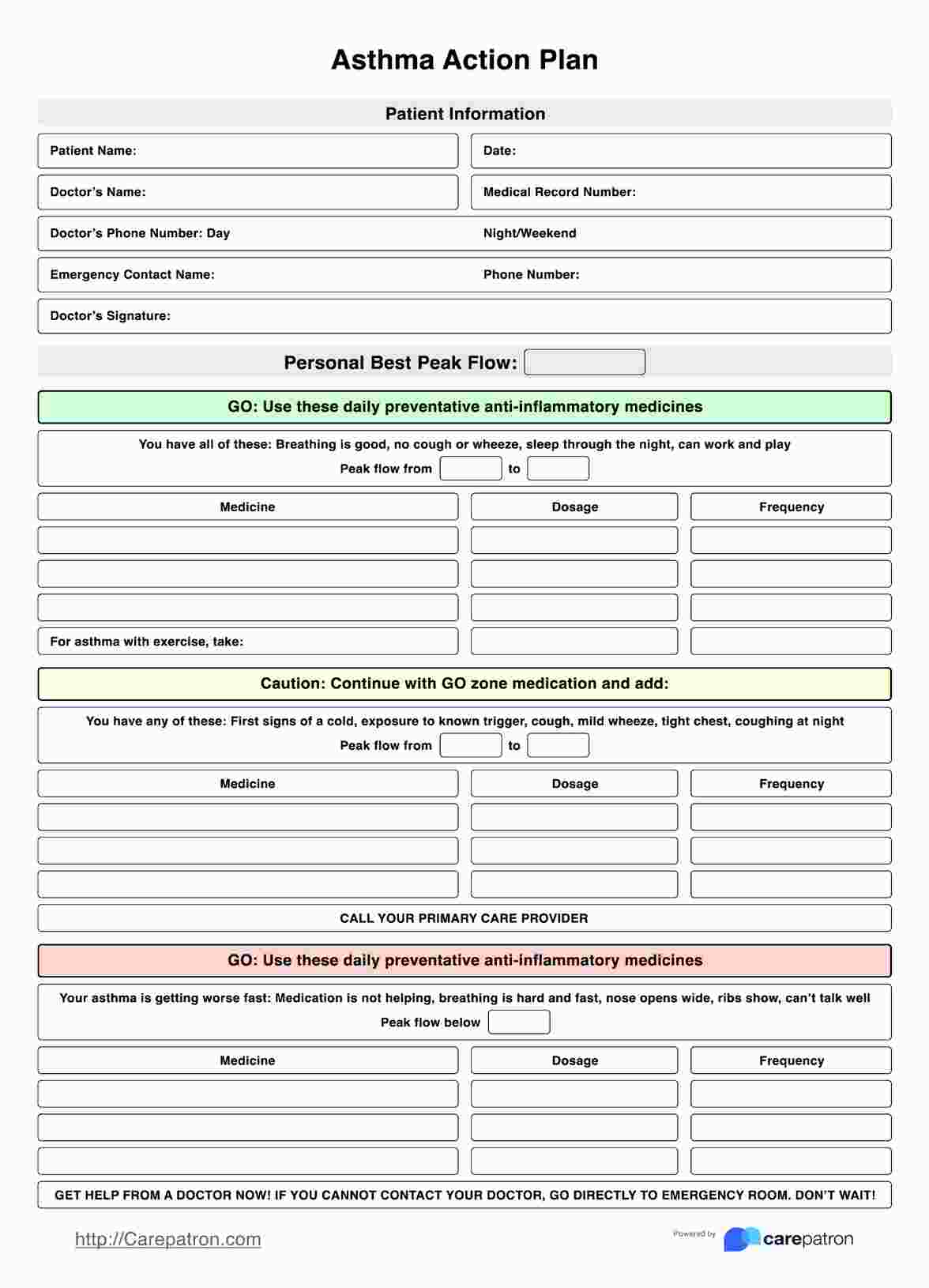Asthma Action Plans are highly reliable because they cover different severity levels, which are backed up and informed by Peak Flow Tests. Asthmatics will highly benefit from using Asthma Action Plans because they will know exactly what they need to take and do depending on the severity of their asthma.

Asthma Action Plans
Asthmatics should always have a written/printed asthma action plan so they can assess the severity of their asthma and take the appropriate action! Here is an example of what one would normally look like!
Asthma Action Plans Template
Commonly asked questions
No. While the medication will likely be the same, it’s still always best to base your medication choices for your patient on their tests and discussions with you. Some people require Albuterol, some don’t. Some people need to be nebulized, while some don’t. Also, the information in the sample was written for a fictional patient for demonstrative purposes only. It really is best not to copy the sample texts.
Yes. This will depend on the patient. If they have a severe asthma attack and the medication you listed down isn’t working at all (especially the ones listed specifically for the Red Zone), then you might have to adjust the dosages, change the prescribed medications to see if those work, or even employ the use of other means to treat lungs, like nebulizers.
EHR and practice management software
Get started for free
*No credit card required
Free
$0/usd
Unlimited clients
Telehealth
1GB of storage
Client portal text
Automated billing and online payments











